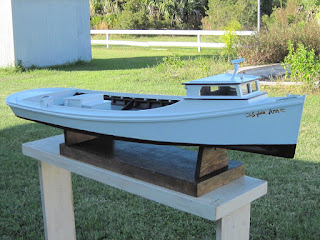Build Your Own Sturdy Wooden Boat: A Beginner's Guide
Always dreamed of gliding across the water in a boat you built yourself? This isn't a pipe dream! With a little patience, some basic woodworking skills, and these easy-to-follow plans, you can construct a sturdy and beautiful wooden boat that will provide years of enjoyment. Forget expensive rentals or complicated designs – this guide empowers you to create your own maritime masterpiece.
Choosing Your Wood and Tools
The success of your boat hinges on selecting the right materials. Marine-grade plywood is your best bet. Its resistance to rot and water damage is crucial for a long-lasting vessel. Choose a thickness appropriate for the size of your boat; thicker plywood offers greater strength and durability. Beyond the plywood, you'll need a selection of robust wooden strips for added strength and aesthetic appeal. These strips can be cedar, mahogany, or any other rot-resistant hardwood. Don't forget about essential tools! You'll need a jigsaw, a drill, clamps, sandpaper, waterproof wood glue, sealant, and a selection of screws. A good quality measuring tape and a pencil are also non-negotiable.
Gathering Your Supplies
Before you begin, meticulously gather all your supplies. Create a comprehensive checklist, ensuring you have sufficient plywood sheets, enough wooden strips, and all the necessary fasteners. Remember, running out of a crucial component mid-project can cause delays and frustration. Thorough planning prevents this.
Constructing the Boat's Hull
Start by cutting the plywood according to your chosen plans. Accurate measurements are paramount here. Use your jigsaw carefully to create precise cuts. Once the base panels are ready, assemble them using waterproof wood glue and screws. Reinforce the joints with the wooden strips, strategically placing them to maximize structural integrity. Apply generous amounts of glue to each joint and ensure even pressure using clamps. Allow ample drying time for the glue to fully bond.
Adding Structural Support
To build a truly sturdy vessel, consider incorporating internal supports. These can be strategically placed wooden beams or additional layers of plywood, creating a strong skeleton within the hull. This added reinforcement significantly improves the boat's resistance to stress and impact.
Finishing Touches and Waterproofing
Once the hull is complete and secure, it's time to focus on the finishing touches. Carefully sand down any rough edges, smoothing the entire surface. This step significantly enhances the boat's appearance and feel. Apply several coats of high-quality marine sealant to protect your boat from the elements. This will prevent water damage and extend the lifespan of your handcrafted creation. Finally, add any desired features like seats, oars, and a protective layer of paint or varnish to personalize your boat and improve its aesthetic appeal.
Protecting Your Investment
Regular maintenance is key to preserving your wooden boat. After each use, rinse it with fresh water to remove any salt or debris. Periodically inspect the sealant and reapply as needed. With proper care, your homemade boat will provide many years of enjoyable adventures on the water.
Launching Your Masterpiece
Finally, the moment you've been waiting for! Gently launch your boat into the water, taking care to do so in a calm and controlled environment. Enjoy the immense satisfaction of having built your own seaworthy vessel. Remember to always practice safe boating habits and respect the environment.
Disclaimer: These are simplified guidelines. Always refer to detailed boat-building plans for specific measurements and techniques to ensure safety and success.























